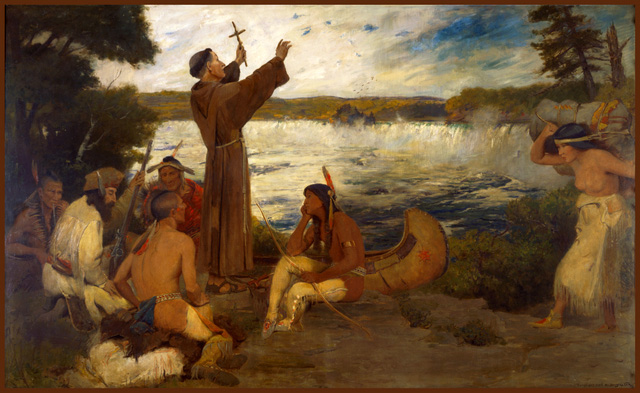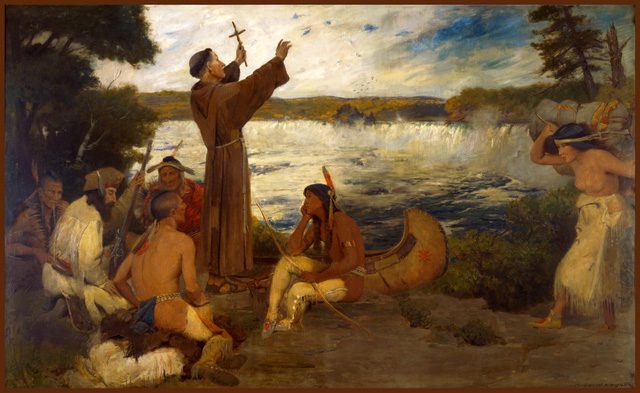 Artwork in the Minnesota State Capitol shows American Indians being “civilized,” losing land to treaties, and being defeated in battle. The art tells a very slanted version of history; and portrays American Indians negatively. This artwork has long been a sore point, particularly given that it hangs in the building where laws are made.
Artwork in the Minnesota State Capitol shows American Indians being “civilized,” losing land to treaties, and being defeated in battle. The art tells a very slanted version of history; and portrays American Indians negatively. This artwork has long been a sore point, particularly given that it hangs in the building where laws are made.
However, the Minnesota State Capitol is undergoing a major renovation, a once-in-a-lifetime opportunity for change. The state created an Art Subcommittee to make recommendations about the art. The Subcommittee includes two noted American Indian leaders: Gwen Westerman, Dakota, a University of Minnesota-Mankato professor, and Anton Treuer, Ojibwe, a Bemidji State University professor.
At a recent hearing, Westerman spoke about some of the art’s historical inaccuracies, and commented on how it showed Dakota people as “a faceless menace.” “Imagine,” Westerman said, “coming here and seeing yourself or your family members depicted in these paintings.”
The capitol art debate is similar to the debate about flying the Confederate Flag over the South Carolina statehouse. Both involve a battle over symbols. In the Minnesota context, the questions are: Do these paintings and symbols reflect the best of our heritage and values? What do we do with art and symbols that are unwelcoming and hurtful?
Here are brief descriptions of some of the most problematic art. None of this art has any historic interpretation.
The Discoverers and Civilizers Led to the Source of the Mississippi (Senate Chambers): The painting shows an Indian man and young woman and the spirit Manitou cornered at the Mississippi’s headwaters. They are surrounded on one side by “discoverers” and on the other by “civilizers.” Angelic beings guide the discoverers and civilizers, signifying divine intervention. The Indian couple looks afraid. The young woman is half naked, both offensive and a false representation of customs. The group of “civilizers” includes a priest with a cross, and behind the priest crouches a man restraining two angry dogs, signifying imminent threat.
Father Hennepin Discovers the Falls at St. Anthony (Governor’s Reception Room): The painting shows Father Hennepin at the falls, renaming it after his patron saint. The term “discovers” is wrong. Hennepin stands in a position of authority, towering over the people sitting below him, when in fact he was a Dakota prisoner at the time. At right, the painting shows a half-naked Dakota woman carrying a heavy pack. Her lack of covering is historically inaccurate and offensive, an apparent effort to show her as uncivilized.
reaty of Traverse des Sioux (Governor’s Reception Room): The Dakota ceded almost all of their land in this 1851 treaty. The painting depicts the negotiation as calm and fair. It was not.







